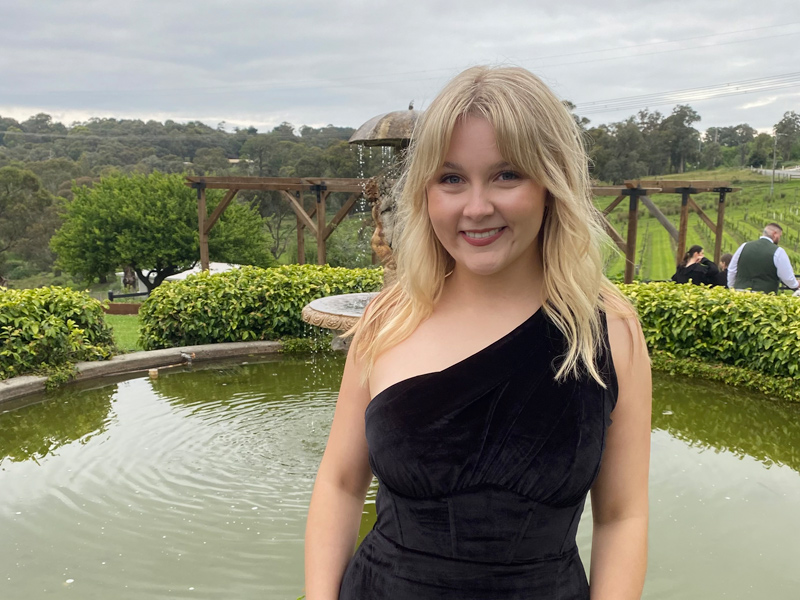‘It’s not just bad period pain’: What you need to know about adenomyosis
Endometriosis is becoming more widely acknowledged, but we don’t often hear about its equally debilitating “evil sister”. So what exactly is adenomyosis?
India Weaver has both endometriosis and adenomyosis.
The marketing manager has endured crippling pain that has led to hospitalisation, has missed work and social events, and even lost friends while trying to manage the debilitating conditions.
India says one of the biggest challenges with adenomyosis is the lack of understanding, even among medical professionals.
“There’s a lot of misinformation because there’s a lot of misunderstanding that comes from messaging that doctors are getting,” India says.
“It’s not just bad period pain.”
What is adenomyosis?
Gynaecologist and advanced laparoscopic surgeon Dr Shamitha Kathurusinghe says adenomyosis occurs when tissue similar to the inner lining of the uterus is found in other parts of the uterus, usually in the muscle layer.
Dr Kathurusinghe says the condition is different to endometriosis (or “endo”).
“Endometriosis is the term that we give for inner lining-like tissue found elsewhere, outside the uterus,” Dr Kathurusinghe says.
Julia Argyrou Endometriosis Centre nurse co-ordinator Nikki Campbell also distinguishes between the conditions.
“Endo is very well known because it’s had a lot of media attention recently, but we often don’t hear about adenomyosis,” Nikki says.
“It’s kind of referred to as the ‘evil sister’ of endo.”
What are the symptoms of adenomyosis?
- Severe cramping or sharp, knife-like pelvic pain during menstruation (dysmenorrhoea)
- Heavy bleeding that impacts quality of life
- Radiating pain down your legs and back
- Pain when passing bowel motions
- Diarrhoea
Why is adenomyosis difficult to diagnose?
Dr Kathurusinghe says because we normalise period pain, women suffer in silence and don’t seek help.
“And when they do ask for help, research tells us that they may on average see seven health care professionals before they get the help they deserve,” she says.
“Research in women’s health has really lagged behind.”
There is no clear test to diagnose adenomyosis, and it’s not even known how many have the disease.
“That’s where the challenge is; there’s not enough education, there’s no diagnostic testing, there’s not enough awareness,” Dr Kathurusinghe says.
How is adenomyosis treated?
Nikki says hormonal treatments are good options when they work, but they’re not a simple fix.
“If they aren’t well tolerated or are not suitable … then it becomes very tricky,” Nikki says.
“One of the biggest hurdles is that unlike endo, you can’t have surgical removal unless you’re having a hysterectomy.”
India says she can spend upwards of $1500 a month on treatments, medications and specialist appointments, but her only other option is drastic surgery.
A hysterectomy – a procedure to remove the entire uterus – was first mentioned to her as a treatment option when she was 22.
“It’s definitely a big thing to have thrown at you, particularly as a young person,” India says.
“I don’t think at 26 I can accurately make a call on what I want the next 10 to 12 years to look like.”
What to do if you suspect you have adenomyosis
First, consult a trusted GP, but Dr Kathurusinghe says you should also trust your gut.
“We’re all busy looking after the household, carrying the mental load, so when it comes to our own health, we don’t advocate hard enough,” Dr Kathurusinghe says.
“When someone goes on sick leave during their period we often dismiss them, but we’ve got to have some kindness, we’ve got to understand these are serious health concerns and they’re debilitating.”
India says it’s important to find a GP that supports you and gives you the confidence to try new treatments.
“The positivity that comes from having a medical professional believe in you … you can’t ask for any more than that,” she says.
More on women’s reproductive health:
- What you need to know about secondary infertility
- Signs of perimenopause and how to deal with it
- 5 myths about HRT you may need to rethink
Written by Brittany Busch.





